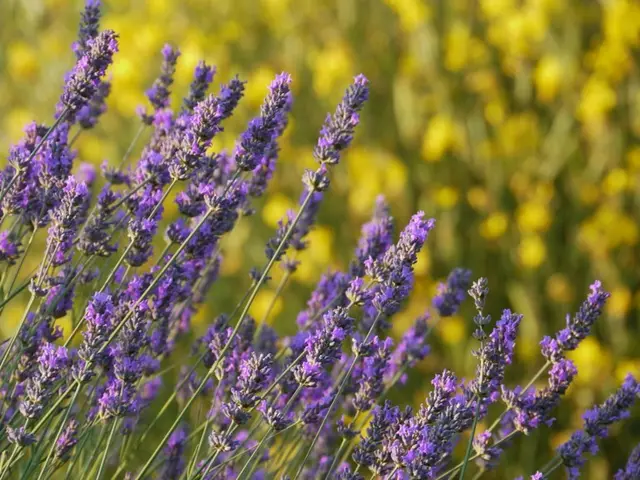Application of Paint on Lime Plaster: Essential Dos and Don'ts to Follow
Lime plaster, a traditional building material, has seen a resurgence in popularity due to its breathable, eco-friendly, and non-toxic properties. When it comes to painting lime plaster, there are certain considerations to keep in mind.
Two renowned paint producers that offer specialist paints for lime plaster are Farrow & Ball and Little Greene. However, there are other options available, such as Edward Bulmer natural emulsion, Mylands Matt Emulsion, and Earthborn's clay-based paint, which is eco-friendly and suitable for lime plaster.
Limewash paint, a popular choice for lime plaster, offers a unique finish due to its translucent nature. It is mould resistant, almost odourless, and uses a different formula compared to standard paint. Unfortunately, standard everyday emulsion paint is not typically suitable for lime plaster as it contains vinyl or plastic that can trap moisture and lead to issues.
Before painting, it is essential to prepare the surface properly. This includes cleaning the lime plastered walls thoroughly, removing dust, dirt, grime, grease, and any stubborn marks or unwanted ridges. For smaller imperfections like hairline cracks or small holes, they can be filled with lime putty or an interior all-purpose filler.
When it comes to the painting process, a mist coat should be applied first. This is a watered-down version of the paint that will be used on the lime plaster, with a ratio of 8 parts paint to 2 parts water or 7 parts paint to 3 parts water. The surface should also be moistened before applying the mist coat. After applying the mist coat, it should be left to dry for at least a couple of hours, ideally longer, before adding a full strength coat of paint.
Clay-based paint does not require a primer when used on lime plaster. This is due to its ability to breathe and prevent damage. For larger repairs, loose plaster should be removed and the plaster reapplied, ideally using the same type of lime plaster to avoid cracking issues.
It is recommended to wait for at least four weeks for lime plaster to fully cure before painting. The curing time may vary depending on the thickness and environmental conditions.
For those seeking more sustainable options, Yellowchair, a manufacturer of sustainable and CO2-neutral chalk paints made in Bavaria, Germany, might be a suitable choice for lime plaster applications.
In conclusion, painting lime plaster requires careful consideration to ensure a successful and long-lasting result. By choosing the right paints and following the proper techniques, you can enjoy the beauty and benefits of this traditional material for years to come.




